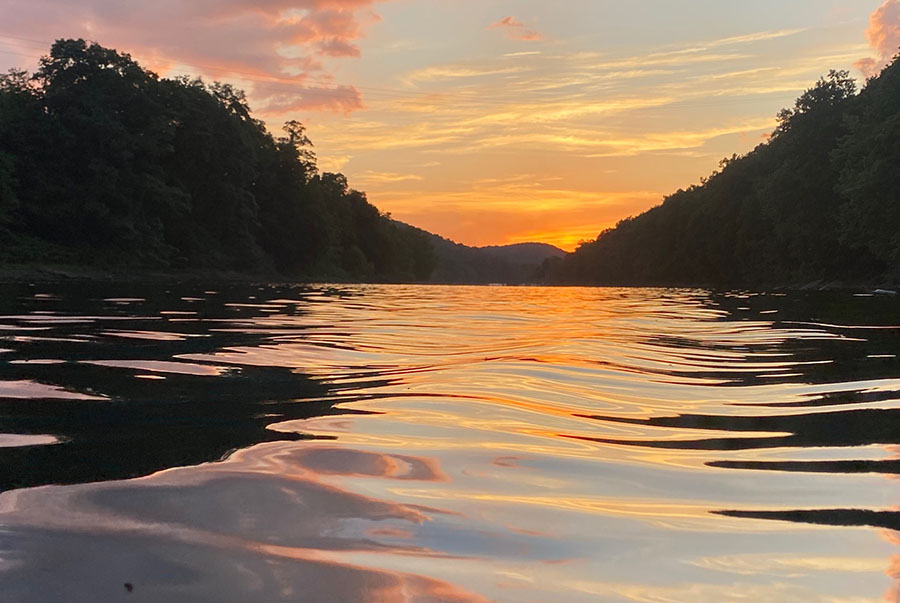
Summer @ CMU Newsletter: Issue IV
Welcome to Issue IV of the Summer Studies newsletter! This is our final newsletter of the summer and as we wrap up the term, we want to thank everyone who has spent this time with us. We are honored and grateful to have spent this #VirtualCMUSummer with such amazing students, faculty, and staff. Your energy, dedication, determination, and passion have allowed us to build a summer community that stayed strong and thriving no matter the circumstances. Thank you, once again, for making this summer a CMU summer.
In this issue of the newsletter: features on the Career and Professional Development Center and the Heinz History Center, some views from home, and a Pittsburgh history spotlight on a ghost amusement park and Pittsburgh’s Fortress of Solitude.
On Campus: Career & Professional Development Center
Whether you're embarking on a job search, looking for an internship, or seeking help with your resume and cover letter, the Career and Professional Development Center (CPDC) has your back! In response to COVID-19, the CPDC is offering all its regular services virtually, including career consulting appointments and all upcoming workshops and career fairs.
In addition to their robust list of current offerings, the CPDC will be launching several enhanced services related to scheduling appointments and virtual resources in the fall. Stay tuned for more info!
You can learn more about the CPDC on their website and by checking out a recent feature article on the CPDC's summer seminars.
CPDC Workshops
A list of upcoming CPDC workshops is available on Handshake. Some, like the Virtual Career Fair Prep Workshop, will take place in August before fall classes begin. Keep an eye on Handshake for event information and links!
Virtual Career Fair
The CPDC is excited to announce the first combined virtual career fair for the 2020-2021 academic year! The Technical Opportunities Conference (TOC) + Encompass + Converge Virtual Career Fair 2020 will be a multi-day event, starting Monday, September 14 and running through September 16, from 1-9 p.m. ET. All majors and industries are invited to attend.
Off Campus: Heinz History Center
Have these newsletters piqued your interest in Pittsburgh history? Or are you (like us) a long-time history nerd? Either way, we recommend checking out the Heinz History Center. The History Center has reopened to the public and is free with your CMU ID, but students who aren’t based in Pittsburgh and those who would prefer to enjoy the museum from a distance can check out their virtual offerings on the History at Home webpage.
History Center Virtual Offerings
Virtual Exhibitions
Curated through a partnership with Google Arts & Culture, these exhibitions focus on pivotal moments in Pittsburgh history and iconoclastic local figures like Fred Rogers.
Quizzes
Ever wonder which Influential Pittsburgh Woman you are or which Pittsburgh Innovator you’re most similar to? Consider the Heinz History Center the Buzzfeed of local historical trivia, because you’re about to find out!
Video Gallery
The History Center offers a gallery of short videos about local history, covering topics from Prohibition to the Vietnam War to the history of Kennywood Park.
Instagram Contest Round Two: Views from Home
The theme for round two of our Instagram contest was views from home, so we're closing out the summer with images submitted by Summer Studies staff of their #VirtualCMUSummers.
Emily
Like many people, I've spent most of this summer at my house. Being at home so much has really allowed me to appreciate how lovely my neighborhood is. It's also made the times when I do venture further away - like a recent excursion to Carrie Furnace steel mill to watch a socially-distanced, outdoor screening of Flashdance - especially exciting.

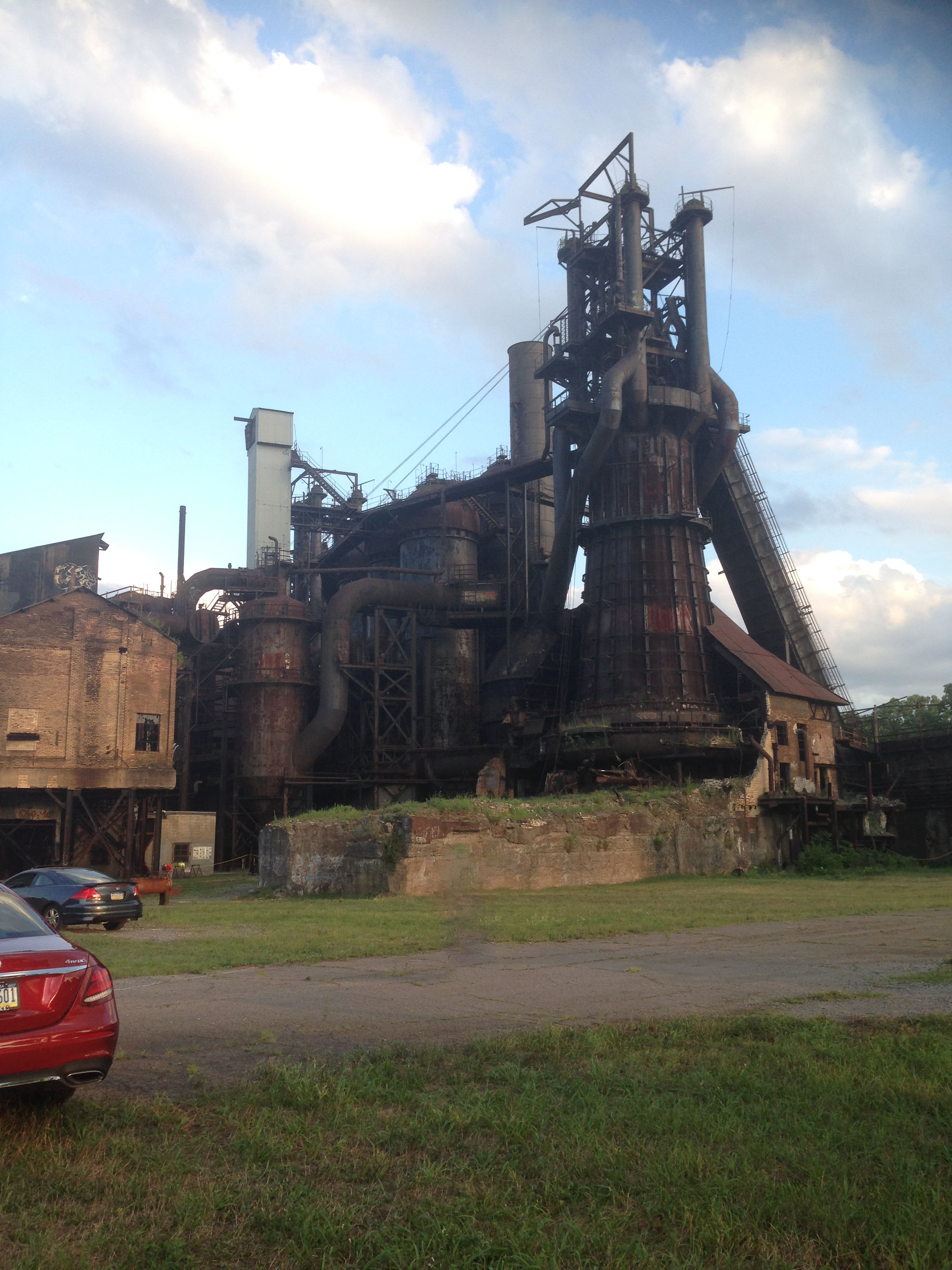

Becky
Most of my summer has been spent at home working in my office or in my yard (gardening)! We do venture out on our boat - especially since it's been such a HOT summer - you can find us on one of the three rivers, or in nearby lakes in PA, Ohio and West Virginia!

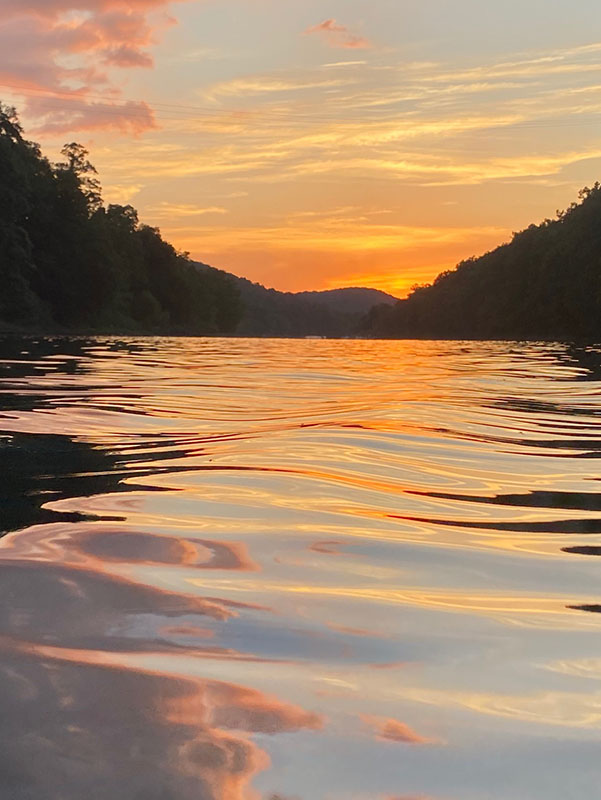
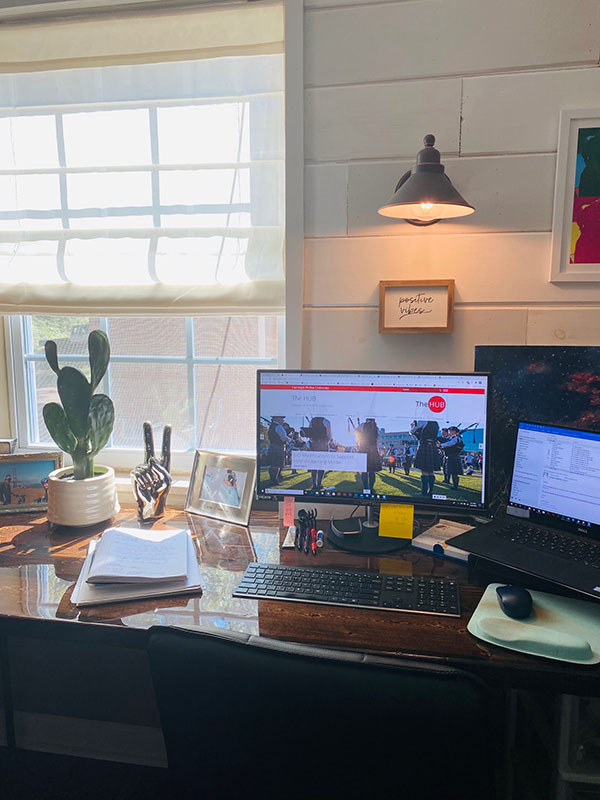
Triyanna
Over the summer I became a “plant mom”. I really enjoy taking care of my plants and repotting them in terracotta pots I painted myself. It’s also our little one’s first summer! She loves going for walks, playing in the pool, and, of course, eating ice cream.
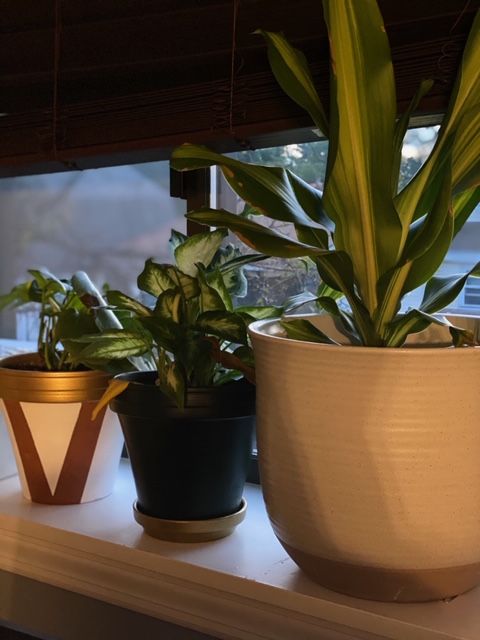

Pittsburgh History Spotlight: George Westinghouse's Fortress of Solitude & the Ghost of Luna Park
Westinghouse Park
Located in Pittsburgh’s Point Breeze neighborhood, Westinghouse Park does not seem particularly noteworthy at first glance: an unassuming square patch of grass and trees sandwiched between the busway and Thomas Boulevard, the park is far less striking than the larger and more popular Schenley and Frick Parks. Yet Westinghouse Park has a colorful history, much of it buried below the earth’s surface.
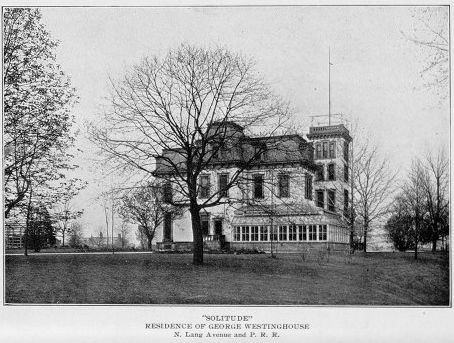 From 1871 to 1914, the park was the site of George Westinghouse’s estate. Westinghouse was a pioneering engineer who invented the railway air brake and championed the use of alternating currents for electrical power distribution (making him one of Thomas Edison's main rivals). Westinghouse and his wife Marguerite purchased the five-acre parcel of land when the couple was in their twenties and immediately set about constructing a mansion, which they named Solitude. Westinghouse also constructed a carriage house on the grounds, the basement of which housed his private laboratory. A 220 foot tunnel connected the mansion to the workshop, so that Westinghouse could be protected from the elements when visiting his lab.
From 1871 to 1914, the park was the site of George Westinghouse’s estate. Westinghouse was a pioneering engineer who invented the railway air brake and championed the use of alternating currents for electrical power distribution (making him one of Thomas Edison's main rivals). Westinghouse and his wife Marguerite purchased the five-acre parcel of land when the couple was in their twenties and immediately set about constructing a mansion, which they named Solitude. Westinghouse also constructed a carriage house on the grounds, the basement of which housed his private laboratory. A 220 foot tunnel connected the mansion to the workshop, so that Westinghouse could be protected from the elements when visiting his lab.
While Pittsburgh has been home to many eccentric inventors and industrialists, George Westinghouse is in many ways the city’s own mad scientist. Over the years, George and Marguerite Westinghouse hosted a number of famous scientists, politicians, and inventors at Solitude, including William McKinley, Lord Kelvin, and Nicola Tesla. In the winter of 1883, Westinghouse—perhaps inspired by his subterranean workshop and tunnel network—became curious about what else was lurking under the surface of his estate and began drilling for natural gas.
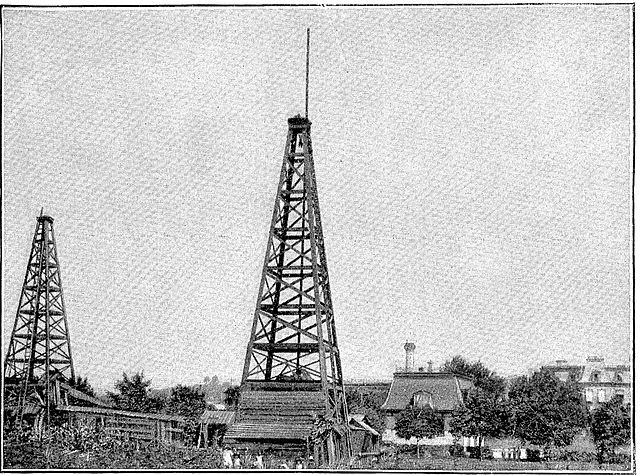 His gamble payed off: in the spring of 1884, Westinghouse struck gas, but a blow-out caused an uncontrollable release of gas for a week before Westinghouse found a way to cap the well. Once he had constructed a tower, Westinghouse conducted an illumination test that resulted in a 100-foot tower of flame that illuminated the neighborhood so brightly that it was possible to read a newspaper in the middle of the night. Westinghouse would go on to construct several more natural gas derricks in his garden, a choice which apparently did not endear him to his wealthy neighbors, H.J. Heinz and Henry Clay Frick.
His gamble payed off: in the spring of 1884, Westinghouse struck gas, but a blow-out caused an uncontrollable release of gas for a week before Westinghouse found a way to cap the well. Once he had constructed a tower, Westinghouse conducted an illumination test that resulted in a 100-foot tower of flame that illuminated the neighborhood so brightly that it was possible to read a newspaper in the middle of the night. Westinghouse would go on to construct several more natural gas derricks in his garden, a choice which apparently did not endear him to his wealthy neighbors, H.J. Heinz and Henry Clay Frick.
When Westinghouse died in 1914, he left Solitude to his son, who sold the estate in 1918 to the Engineer’s Society of Western Pennsylvania. The society established the park as a memorial to Westinghouse. Years later, all that remains of Westinghouse’s mansion and derricks are the underground tunnels, which still hide beneath the park.
Luna Park
Solitude isn’t Pittsburgh’s only strange ghost: from 1905 to 1909, North Oakland was home to Luna Park, the first in a chain of 44 amusement parks that stretched across the globe.
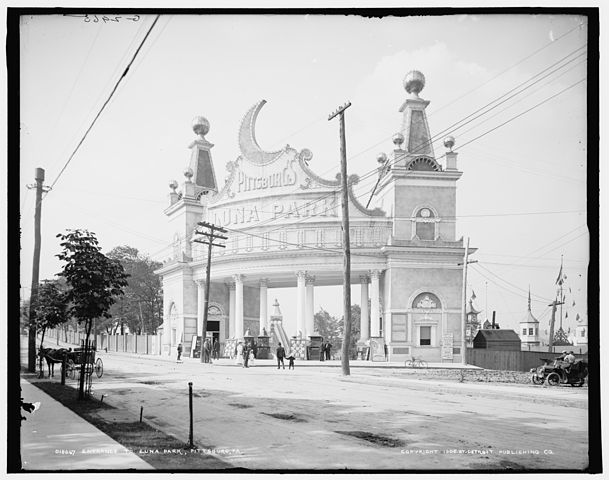 Owned and built by entrepreneur and designer Frederick Ingersoll, Luna Park was constructed on a section of land bounded by Baum Boulevard, Center Avenue, and North Craig Street. In addition to being the first amusement park with full electrical lighting, Luna Park boasted roller coasters, carousels, a fun house, a Ferris wheel (also invented in Pittsburgh), a dance hall, and a baby incubator exhibit.
Owned and built by entrepreneur and designer Frederick Ingersoll, Luna Park was constructed on a section of land bounded by Baum Boulevard, Center Avenue, and North Craig Street. In addition to being the first amusement park with full electrical lighting, Luna Park boasted roller coasters, carousels, a fun house, a Ferris wheel (also invented in Pittsburgh), a dance hall, and a baby incubator exhibit.
Yes, you read that correctly. At the turn of the century, baby incubator exhibits were a popular feature in amusement parks like Luna Park and Coney Island. The baby incubator was still a recent invention, not widely accepted by doctors, and at the time, amusement parks and fairs often featured scientific innovations as side shows for the general public. Champions of the baby incubator quickly realized that the public would pay to see premature babies in incubators, and that this fascination could finance the care of the infants. Thus, the baby incubator exhibition was “born”. While it may seem strange or irresponsible by contemporary standards, exhibitions like the one at Luna Park saved the lives of thousands of babies, and the Coney Island baby incubator exhibition allegedly had an 85% success rate.
Luna Park must have been a marvel to behold, but its tenure was not particularly long. In 1908, Frederick Ingersoll declared bankruptcy and in in 1909, unable to stand up to the competition of other local amusement parks like Kennywood, Luna Park closed for good.
While nothing of Luna Park remains in Oakland, Lost Kennywood is modeled after the long-gone amusement park. The gateway to Lost Kennywood is a 1/3 scale replica of the original Luna Park entrance, complete with the historically accurate h-less spelling of Pittsburg (did you know we briefly lost our “h” until residents campaigned to get it back?). And some of Ingersoll’s original amusement park chain remains: Luna’s sister amusement parks are still standing in Mexico, Australia and Greece.
Images via Wikipedia.


